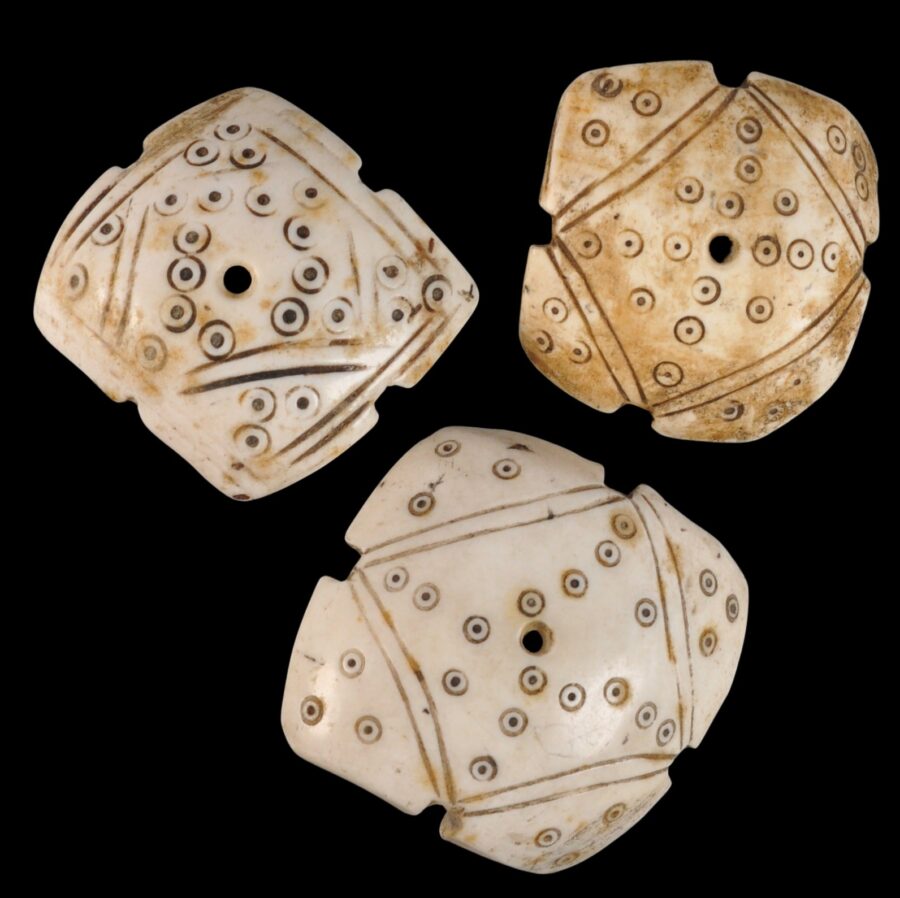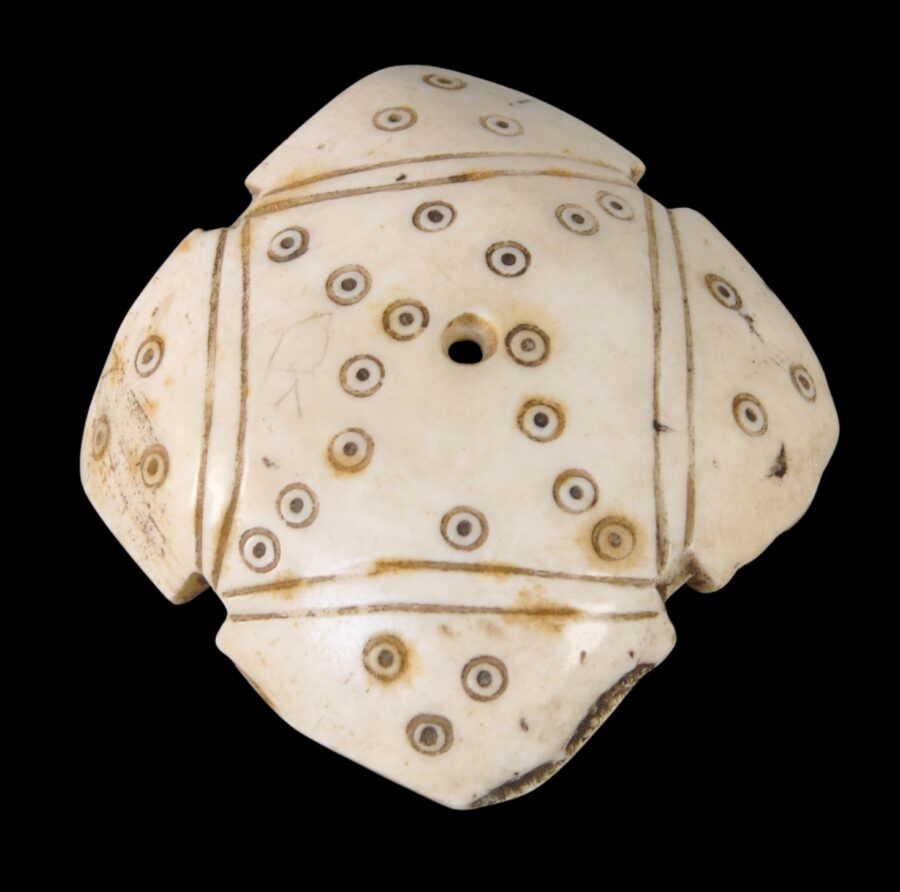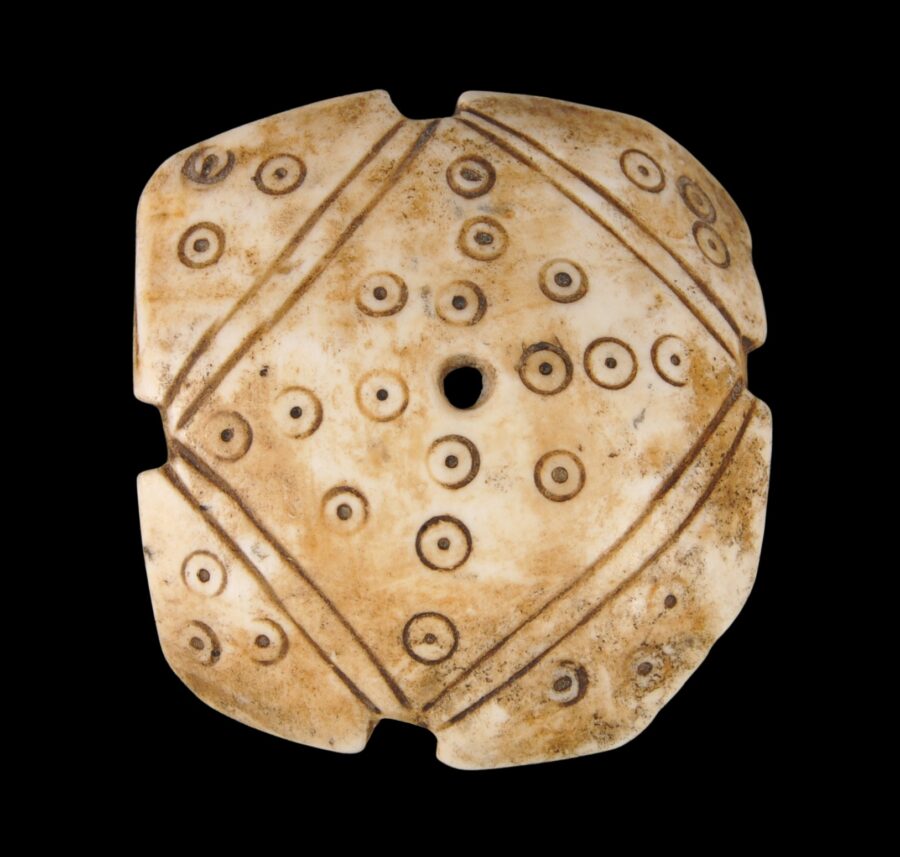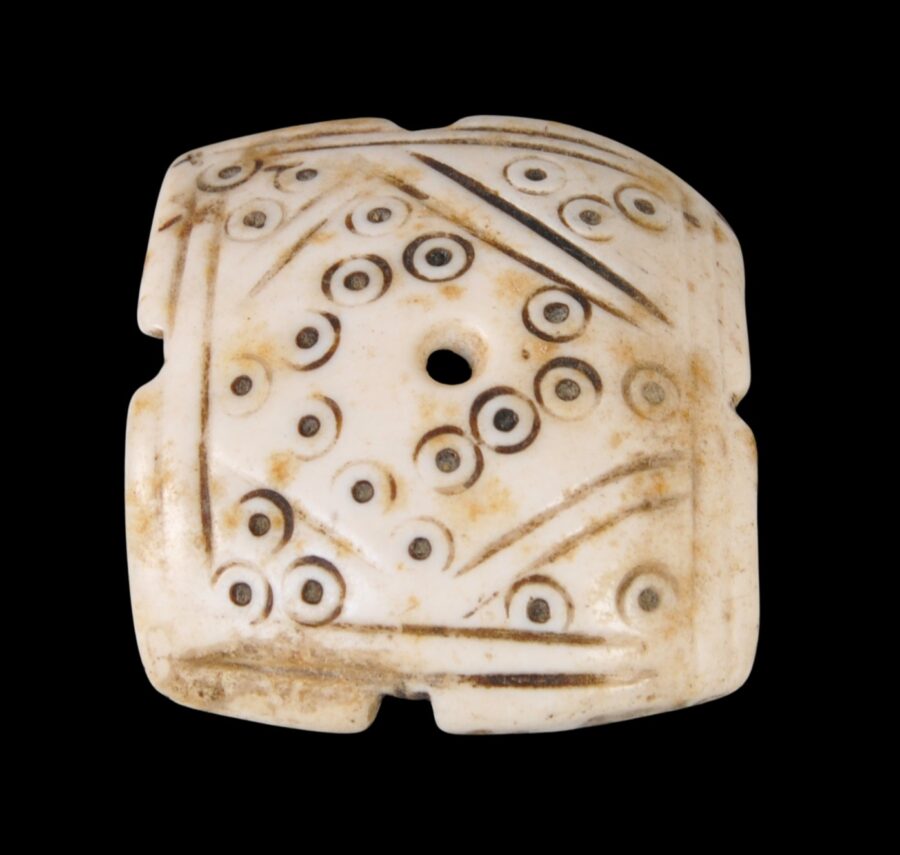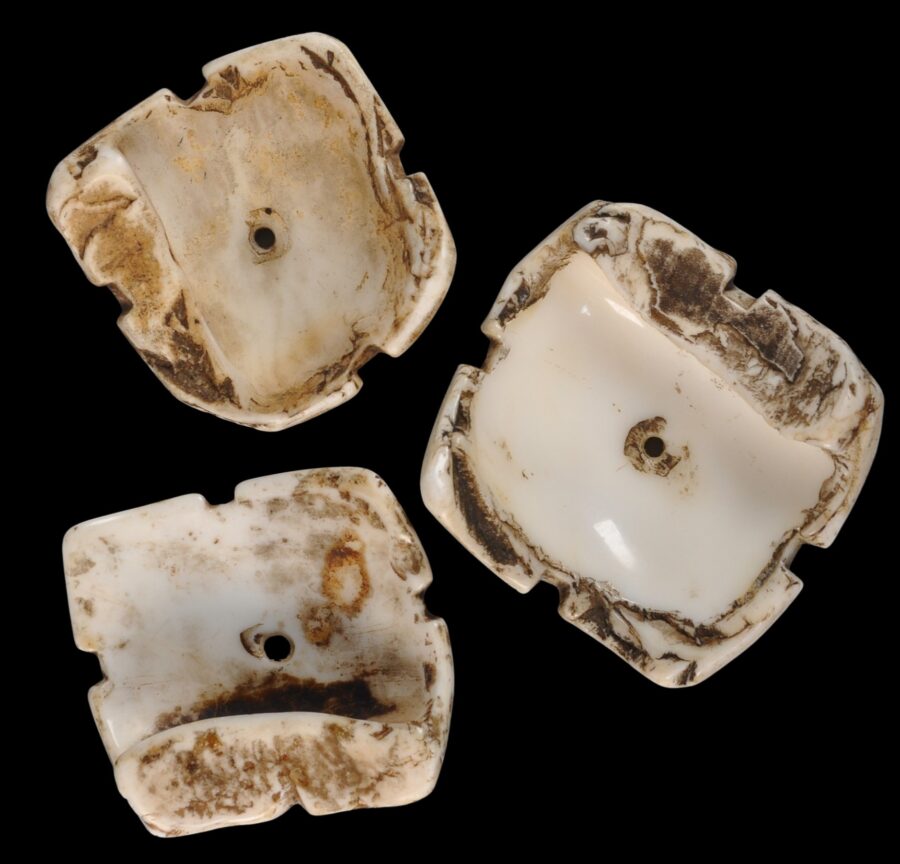Enquiry about object: 9945
Three Himalayan Shell Hair Ornaments (Dunkertsa)
Tibetan Peoples, Lahaul and Spiti, Himachal Pradesh, Himalayan India and Ladakh 19th century
width: 6.4, 6.5 and 7.2cm, combined weight: 221g
Provenance
private collection, Scotland
These three ornaments of carved and engraved chank shell with lac highlights are from the Lahaul (Lahul) and Spiti Districts in the north of India’s northern Himachal Pradesh state in the Himalayas. Related ornaments were worn in Ladakh. Each has the natural curve of the shell from which it was made and has been drilled with a central hole to allow it to be attached to the hair, as a decorative hair or head ornament.
Each has been carved with deep linear grooves and roundels, in a mandala form.
Each has the most splendid patina, with contours softened from years of handling and being worn.
A dating of 19th century has been assigned to the three but they could be earlier.
Ornaments made from shells were prestige pieces – there were no local supplies and the shell components were brought to the mountainous region by traders. Their imported status meant that they were expensive and so were considered luxury goods by the wearers. The marine origins of shell components and the association with fish meant that items made from such components were associated with fertility and so were ideal items for women to wear.
The form and decoration relates to silver-alloy examples that also were worn in the hair.
Lahaul (Lahul) and Spiti Districts are small in terms of population an even today have a combined population of slightly more than 30,000. The population is generally of Tibetan or related ancestry and the majority ethnic group is the Sino-Tibetan Kinnaur people. Generally, the locals follow a combination of Hinduism and Tibetan Buddhism of the Drukpa Kagyu order, or Tibetan Buddhism of the Gelugpa order.
The ornaments are in excellent condition, and have obvious signs of significant age.
The three have come from an old collection in Scotland, likely to have been put together by a colonial administrator serving in the region. (Scots were commonly involved in the colonial administration of India.)
References
van Cutsem, A., A World of Head Ornaments: Africa, Asia Oceania, America, Skira, 2005.
Daalder, T., Ethnic Jewellery and Adornment: Australia, Oceania, Asia, Africa, Ethnic Art Press/Macmillan, 2009.
Geoffroy-Schneiter, B., Asian Jewellery: Ethnic Rings, Bracelets, Necklaces, Earrings, Belts, Head Ornaments, Skira, 2011.


